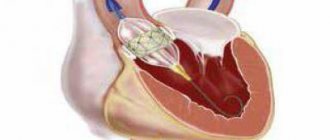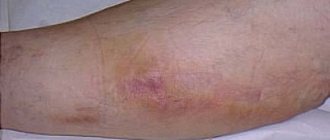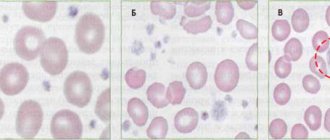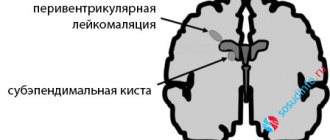Echoencephalography is a diagnostic neurophysiological study of the structure of the brain, aimed at identifying its pathological processes and changes. The method is non-invasive and requires the use of ultrasonic waves. Thanks to it, it is possible to determine intracranial pressure and identify volumetric processes due to which structures are displaced.
At the same time, it does not allow one to accurately determine the type of detected formations, therefore it is accompanied by computed tomography or magnetic resonance imaging. These are more accurate ways to make an accurate diagnosis.
Echo-EG of the brain involves scanning and calculations by a doctor. They are necessary in order to determine the parameters of the internal volume of the skull and the presence of displacements of brain structures, to identify an increase in intracranial pressure after injuries or due to neoplasms.
You can undergo an Echo-ECG in Moscow at the CELT multidisciplinary clinic. We have everything necessary to obtain all the necessary information and correctly interpret research data.
Echoencephalography of the brain (Echo-EG) - 1,200 rubles.
15 minutes
(duration of procedure)
Outpatient
Advantages of echoencephalography of the brain in CELT
We employ specialists with many years of experience, allowing them to carry out diagnostic studies as accurately as possible and obtain all the necessary data. They have modern equipment in their arsenal that allows them to get a complete picture. Thus, Echo-EG of the head in our clinic allows:
- identify neoplasms in the early stages of their development;
- conduct a qualitative study of the midline structures and periosteal space;
- determine ICP indicators and the nature of pulsations;
- minimize the human factor and increase diagnostic accuracy.
You can find out the price of Echo-EG in our clinic in the corresponding section of our website or by calling us!
How does head ES differ from MRI, CT and EEG?
There are a number of differences between diagnostics aimed at studying brain structures. What is the difference between Echo REG, the difference from EEG and other types of diagnostics, see the table:
| Diagnostic name | Short description | Difference from Echo EG |
| Electroencephalography (EEG) | Studying the activity of the brain by recording the bioelectric potentials of its different parts. | It is carried out to study the brain by recording its bioelectrical activity. It is performed to determine the frequency, amplitude, and rhythm of brain biopotential waves. |
| Reencephalography (REG) | A method for assessing cerebral circulation and checking vascular tone in any part of the brain. | Allows you to study the state of cerebral vessels and their functional parameters. |
| Magnetic resonance, computer, positron emission tomography (MRI, CT, PET CT) | These studies allow you to obtain a three-dimensional image of any part of the human body with high contrast. | These methods are aimed mainly at identifying tumors and deformations in brain tissue. Thus, MRI is better used in the presence of small tumors, since Echo EG is not very powerful in identifying small pathological foci. |
Indications for ultrasound echoencephalography
The study is carried out as part of primary neurological diagnosis when the patient complains of:
- headache;
- constant feeling of nausea;
- frequent loss of consciousness;
- feeling of pressure on the eyes;
- incessant noise in the head;
- disturbances in concentration and memory.
The indication for this is an increase in ICP or the need to measure it, suspicion of the presence of neoplasms, foreign objects, cysts and hematomas in the cranial cavity if computed tomography and magnetic resonance imaging are not available. The study is carried out if necessary:
- confirm the presence of diseases such as epilepsy, brain damage of a degenerative, vascular or inflammatory nature;
- identify the patient’s simulation of hearing and visual impairments;
- assess the brain functioning of comatose patients;
- determine the cause of sleep disturbances and abnormal surges in blood pressure;
- determine the efficiency of functioning of blood vessels and tissues.
Indications for testing
h22,0,0,0,0–> p, blockquote5,0,0,0,0–>
Doctors refer for ECHO of the head for the following pathologies:
p, blockquote6,0,1,0,0–>
- Neoplasms are malignant and benign.
- Tuberculosis, ischemia, cerebral infarction.
- Encephalopathy.
- Swelling, abscess.
- Shaking paralysis.
- Tumor of the anterior pituitary gland.
Two-dimensional echoEG is necessary for:
p, blockquote7,0,0,0,0–>
- Traumatic brain and neck injuries.
- Migraines.
- Noise, ringing in the ears.
- Head spinning.
- Headache attacks.
- Shell shock.
- Acute cerebrovascular accident.
- Vascular or hypertensive encephalopathy.
- Vertebro-basilar syndrome.
- Increased intracranial pressure.
- Necrotic processes in the brain.
- Vegetative-vascular dystonia.
- Poor circulation due to damage to the vertebral artery.
Contraindications to echoencephalography in M-mode
Echoencephalography of the brain in children and adults is a safe procedure. It does not require the use of painkillers (or any other pharmacological drugs) and has no physiological contraindications. However, it should be postponed during acute respiratory diseases accompanied by a runny nose and/or cough. It is not used if the patient has open wounds or suffers from psychological disorders in the areas where the sensors need to be installed. The latter can cause hysterics due to the unfamiliarity of the situation.
Preparation rules
Despite the simplicity of the echo procedure, you should properly prepare for the study. Experts point out that to obtain information about the functioning of the brain, you will not need to change your diet or take medications.
However, the reliability of the result may be affected by:
- sleep disturbance – it is recommended to get a good night’s sleep the night before the examination;
- hunger – on the day of the diagnostic visit, a light breakfast is necessary;
- stress – the procedure is absolutely painless, so no need to worry;
- bad habits - doctors advise to refrain from abusing tobacco and alcohol products.
In addition, you should be prepared that for some time, while the specialist performs ultrasound diagnostics, you will need to keep your head and body still in order for the result to be accurate and informative. Therefore, echoencephaloscopy in young children is performed in the presence of parents who hold their heads in the desired position.
If there are damage to the scalp, even superficial to the skin, they can distort the ultrasonic waves. The study must be postponed until the wounds have healed or resort to other techniques that allow such tissue defects.
Preparation for the procedure and its implementation
One- and two-dimensional echoencephalography does not require the patient to prepare independently. All he needs to do is visit the diagnostic room at the appointed time. Before starting the examination, the diagnostician will ask him to remove from his head any accessories that may interfere.
During the process, the doctor installs an ultrasound sensor in certain areas of the head. To ensure high-quality contact, a contact gel is first applied to them. This prevents air from entering and causing interference. The sensor is placed:
- above the ear canals;
- near the outer edges of the eyebrow arches (at the temples);
- behind the ears at a distance of four to five centimeters.
By sending ultrasound signals, the sensor catches them in reflected form and transmits them to the device, which displays them on the monitor in the form of a graphic image similar to the teeth of an electrocardiogram.
When carrying out the procedure in a two-dimensional format, the sensor is not rearranged sequentially - it is moved along the surface of the head, providing an image of the slice in a horizontal plane along the line of its movement. An image of the formations located at this level is displayed on the screen. The duration of the procedure is no more than 15 minutes.
Features of the technique
Echo ES, otherwise called echoencephaloscopy by specialists, is a modern method of instrumental examination of brain structures. The study is carried out quickly and does not require any effort on the part of the patient or the introduction of a contrast solution. Therefore, no harm is caused to human health.
The procedure itself is non-invasive; there is no opening of the skull bones. The study is based on the ability of ultrasound waves to bounce off brain tissue. Typically, wave frequencies in the range of 0.5–15 MHz/s are used. In this case, the image may differ due to the fact that different constituent elements of the brain reflect ultrasound in their own way - blood, blood vessels, bone and brain tissue.
To carry out the procedure, special sensors are placed on a person’s head, which transmit and record reflected brain signals. The duration of the study is no more than 20-30 minutes . During this period, thanks to manual and computer processing, the doctor receives information: the symmetry of the location of structural units, the dimensional volumes of the ventricles, the presence of foreign formations.
The study can be carried out in two modes - obtaining a graphic or flat image on the screen. The best option is determined by the doctor individually.
Decoding echoencephalography of the brain
The results of the diagnostic study are interpreted by a neurologist. As already mentioned, the norm provides for the same distance from the central signal to both sides. The permissible deviations are no more than two millimeters for adults and three for children.
During volumetric processes in the GM substance, a shift in the central signal occurs, changes in the shape and duration of responses. Thus, the following pathological conditions can be identified:
- intracranial neoplasms of benign and malignant etiology;
- tuberculomas;
- hematomas localized in the intracranial space;
- cerebral infarctions;
- focal accumulations of pus in the GM substance;
- syphilitic granulomas.
Their localization is determined by median deviations. The distance to the central signal on the side of the formation is greater than on the healthy side, although in certain inflammatory diseases and stroke the opposite may be true. A similar phenomenon can be triggered by a decrease in the volume of one hemisphere during recovery processes, when scarring or resorption is observed.
The doctor determines the presence of a problem based on echo-EG readings:
- with tumors of malignant etiology, a serious shift is observed;
- infarction states of the brain are characterized by small transient changes;
- in case of traumatic injuries, displacements of no more than three millimeters are observed due to swelling;
- hydrocephalus is characterized by expansions of the central signal from five minimeters and the appearance of a large number of lateral ultrasound signals;
- suspicion of hemorrhage arises with the most serious asymmetry.
It is important for patients to understand that the diagnostic accuracy of this method directly depends on the qualifications and experience of the specialist, as well as on the characteristics of the device involved in the process.
Make an appointment with our specialists by filling out and sending us an application online or by calling us by phone! Trust the diagnostics to professionals!
Result evaluation
Each structure of the brain, from a small vessel to the bones of the skull, reflects ultrasonic waves in its own way. The procedure for obtaining an echo image on the device screen is based on this. Decoding the result is a comparison of information from quantitative indicators. Both the distances between groups of signals and their total number are measured.
It is customary to distinguish 3 groups of signals:
- formed in the vicinity of the ultrasound sensor - they are reflected from the tissues and bone elements of the skull, as well as the cerebral cortex with the formation of the initial complex;
- reflection of ultrasound waves from the hemispheres - the central complex of signals;
- reflection of impulses from brain tissue and cranial bones, but from the side opposite to the sensor.
In a healthy person, the length of the initial and final complexes is identical. If Echo ES moves more than two millimeters, then it is assumed that a space-occupying formation has formed in the hemisphere opposite to the sensor - a hematoma, neoplasm, cyst.
Whereas interhemispheric asymmetry is revealed due to the different number of echo signals from the left as well as the right hemisphere. The cause of such a failure can be both cerebral hydrocele and malignant neoplasm.
What do Echo-EG indicators mean?
There are 3 signal complexes with which a conclusion is made:
- Elementary. The sensor receives these signals extremely quickly. Their formation occurs as a result of the ultrasound wave being reflected from the skin, cranial bones and muscles.
- Median. The formation of signals occurs as the waves come into contact with structures located between the hemispheres.
- Finite. The formation of signals occurs as a result of the contact of the wave with the dura mater.
Then the indicators are deciphered . The conclusion of the decoding of the Echo-EG of the brain is normal:
- Between the start and end signal, the echo signal has average values. Equal M-echo distances between hemispheres are required.
- The value of the median complex should not increase. If there are any deviations from the norm, then this indicates
presence of high intracranial pressure. - It is unacceptable for the M-signal ripple to exceed 30%. If these indicators are high (up to 60%), then this indicates that the person is prone to the appearance of hypertensive pathology.
- Normally, between the final and initial signals there should be small pulses of the same amplitude, and there should be an equal number of them.
- The midsellar impulse should fluctuate around 3.9–4.1. A lower value indicates high intracranial pressure.











